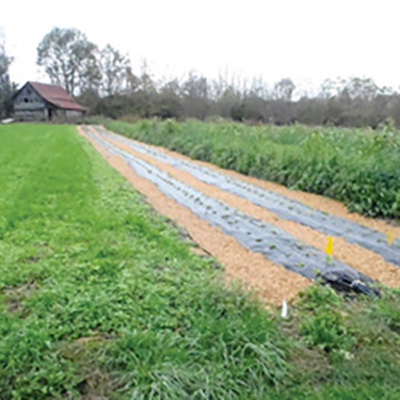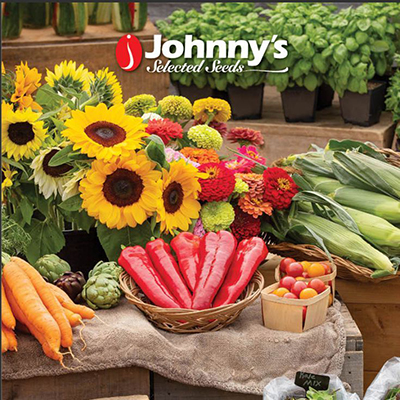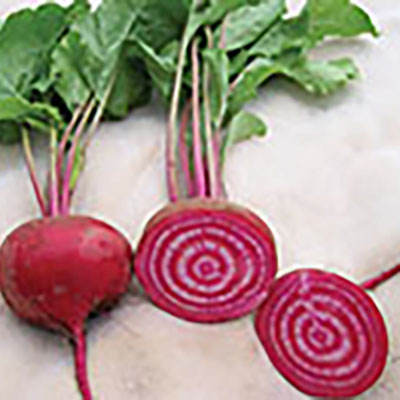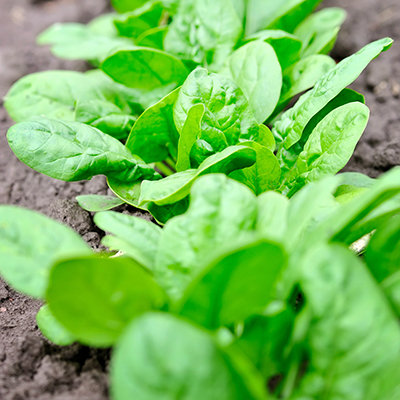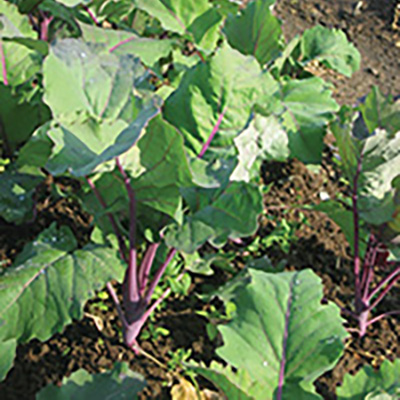While some growers are eager to get their fields and gardens into winter cover crops, others see the last quarter of the year as an opportunity to sow and plant some cold-hardy vegetable crops. Some vegetables grow quickly and can be harvested before winter, others overwinter for early spring harvest, and some can even be harvested throughout the winter, depending on your climate. Because winter conditions can vary, success cannot be guaranteed. If a crop fails there is unlikely to be time to resow. I have plenty of respect for farmers who carefully guard their winter down-time in order to recover energy before next spring. And for those who plan to build barns or greenhouses, or fix equipment. If you don’t have big plans and are not desperate for a rest, fall planting is worth considering among your options. As an extra plus, weeds grow slower in colder weather, planting dates may become more flexible, and you have fewer crops to take care of.
Winter Share CSAs will be much more in demand as the Locavore movement grows, as will year-round demand for local foods in stores and markets. After all, people eat year round, not just for the duration of a 26-week summer CSA. If you don’t want to do the work yourself, perhaps you can rent out some land to a grower for the winter, or make some cooperative arrangement. There is a big potential for Winter Share vegetable CSAs to link up with Bread Shares, Herb Shares, and other value added products, strengthening the whole local economy. If you keep your customers through the winter, you’ll have their loyalty next summer.
Before taking the plunge, know your climate, know your resources, know your market, know your crops, and when you don’t know, experiment on a small scale.
Your climate
Useful data include first frost date, daylight hours (related to latitude north or south of the equator), average annual minimum temperature (USDA Cold Hardiness Zone), and wind chill effects. Temperature is a big factor in the rate of crop growth, but it is not the only one. Excess soil moisture, wind strength, rodent and deer pressure also need consideration. Three hours of direct sun per day is needed — in winter the sun arcs lower in the sky than it does in the summer, possibly not making it above the horizon for as long as you think, if you live among hills. On the plus side, deciduous trees will be leafless, so you may get more sunlight than in summer!
Your resources
If you have a hoophouse, you’ll be able to produce an abundance of fresh crops. If you don’t have a hoophouse, fall is a good time to put one up. You can sow a nursery bed of transplants outdoors under row cover to give yourself a head start, then transplant the seedlings into your hoophouse once you get the plastic on. (You’ll also get the chance to experience an interesting “season reversal” in weeds if you cover your hoophouse in late fall - first the cool weather weeds germinate, then the warm weather weeds return as the space warms up — a harbinger of what you can hope for in vegetables, too!) Whenever it is sunny, even if it’s very cold outside, your winter hoophouse crops will be actively growing in the extra warmth.
Cold frames are useful. Heavy duty row cover with hoops and something to hold down the edges is also a valuable tool. Each layer of thick row cover adds 6F degrees of frost protection (but reduces light transmission to 75%). Standard weight row cover provides 4F protection. Depending on your climate, some crops may not need row covers, or may only need covering for the coldest nights. Kale, for instance, may only need to be covered for a short time during the winter to keep it alive for spring, when it can become very productive again.
Raised beds can help keep plants warmer and drier. Seaweed foliar sprays can increase the cold hardiness of your plants. Straw, tree leaves, pine straw or hay mulch around (not over) the plants can also help keep roots warmer.
What about your human resources? If your crew has slimmed down to yourself only, the workload will need to reflect this.
Your market
If you have a CSA, find out how many sharers would be interested in a Winter Share, and how often they would want to pick up — perhaps every other week? Or every other week in October, once a month in November, December, January, February, twice during March? Design something that works best for you and your CSA. It’s unlikely to be the same as the summer schedule. If your farmers market closes in the winter, perhaps deliveries to stores or restuarants would suit you? Also consider your market when choosing your crops — do your customers like the more bitter endives and chicories? Sour sorrel? Pungent mustards? Tiny leafy crops such as corn salad, claytonia? How much educational marketing are you willing to do to get people interested in the more unusual crops? Do you want to fuss with small-leafed crops? (We don’t.)
Your crops
Winter vegetable crops fall into three categories: those that grow fast and mature before the coldest weather, those that can be harvested all winter, and those that sit in the ground and get off to an early start in the spring, allowing an earlier harvest. Look for especially cold-tolerant varieties or gene lines. Brett Grohsgal and Christine Bergmark of Even’ Star Farm and Frank Morton of Wild Garden Seeds are working to produce extra-hardy varieties. Consider investing in cold-tolerant seed stock and then saving your own seed to select for cold tolerance as it is needed at your farm. Sometimes heirloom strains are more cold tolerant than modern hybrids – winter hardiness has fallen out of favor in the era of highway-travelling veggies.
Fast fall crops
Look for cool-weather crops that mature in 60 days or less. Mostly these are greens and fast-growing root vegetables. Possibilities include salad greens (lettuce, endives, chicories), radishes (both the very fast small ones and the larger winter ones), and arugula. Also many kinds of oriental mustard greens: Chinese Napa cabbage, Komatsuna, Maruba Santoh, Mizuna, Pak Choy, Senposai, tatsoi, Tokyo Bekana, and Yukina Savoy. Spinach, kale, beets, chard, collards, kohlrabi, turnips, and small fast cabbage (Farao or Early Jersey Wakefield) all fall in this category.
If you use row cover to get through your first frost of the season, there is often a spell of warmer weather before more frosts (here at least), effectively pushing back your first frost date. This may allow a late succession sowing of warm weather crops such as bush beans, squash, or even cucumbers.
For crops to be harvested before killing conditions arrive, the formula to find the last workable sowing date is:
Number of days from outdoor planting to harvest
+ Number of days from seed to transplant if growing your own starts
+ Average number of days of harvest period
+ 14 days “Fall Factor” to allow for the slowing rate of growth as the weather cools
+ 14 days “Safety Margin” from the date of killing temperatures for that crop
= Days to count back from the date of killing temperatures for that crop.
It is possible to reduce the Fall Factor if you are providing protection. Pre-sprouting seeds will reduce the number of days from seed to transplant.
Here’s an example: Early White Vienna Kohlrabi takes 58 days from sowing to harvest (line 1). You can direct sow, so line 2 = 0. You can harvest it all at once and store it in your cooler, so line 3 is 1 day. Assuming you don’t want to use row cover for this, line 4 = 14. Line 5 = 14 also. That all adds up to 87 days. Kohlrabi is hardy to maybe 15°F (-9.4°C). When is the temperature likely to drop to 15°F (-9.4°C)? Not before the beginning of November here, so counting back 31 days in October, plus 30 in September, plus 31 in August – that’s 92 days already, more than enough. We could sow kohlrabi in early August and get a crop at the end of October.
While doing these calculations, consider sowing a winter cover crop such as winter rye between the crop rows a month before your harvest date. By then the cash crop will be big enough to withstand competition from the cover crop. This way, growing a late cash crop won’t cause you to be too late to sow your winter cover crop.
Winter harvest crops
For crops to harvest all winter long, look for those that will survive your lowest temperatures, taking any row covers or other crop protection into account. Consider arugula, some cabbage varieties, carrots in some areas, chard, collards, garlic scallions, horseradish, Jerusalem artichokes, kale, leeks, some onion scallions, parsley, parsnips, salsify, spinach, and very hardy salad crops (corn salad being the hardiest). Fall is too late to plant the slower-growing winter hardy crops like parsnips or leeks.
In the middle of winter, when there is less than 10 hours of daylight, little plant growth happens. At our farm, these dates are November 20-January 20. Because the really cold weather arrives later than the shortest day, our period of little growth is more like mid-December to the end of January. If you want to harvest during that period, sow extra so you can harvest just part of the patch each time. Spinach is the hardiest green we grow over winter (we like Tyee). To grow big enough to harvest in the winter, we sow this spinach at the very beginning of September. We use row covers on hoops to protect the leaves from the worst of the weather, and spinach will make new growth whenever the temperature rises above 37°F. We grow 7 beds, and use a marker flag to indicate which bed to pick next. If we arrive to harvest and find the spinach in the flagged bed isn’t big enough, we wait.
If you get heavy snow-falls, a cold frame will be easier to deal with than row covers.
Overwintering crops
If you can keep certain crops alive through the winter, they will start to grow again with the least hint of spring weather and be harvestable earlier than spring plantings. These include spinach, kale, collards, some onion scallions, garlic scallions, chives, chard and arugula.
Spinach, lettuce, fennel and cilantro seem to have the best cold tolerance when the plants go into winter half-grown. We usually have one or two beds of spinach which we sow in late September, overwinter as adolescents and harvest in the spring. These plants bolt later than the ones we harvest leaves from all winter, and earlier than spring sown beds, so we get continuity of supply. Notice that fall sowing dates are quite exacting: Sept. 5 is the latest we can sow spinach for harvesting October-early April, and Sept. 20-30 sowings will not get big enough to harvest until late February.
Some cabbage (Deadon, Brunswick and January King) can survive in zone 7 for January harvest, but don’t qualify as a fall-planted vegetable, as they are slow-growing and need to be started in summer.
With alliums such as bulb onions, multiplier onions and garlic, the harvest dates are regulated by day length, so the harvest will not be earlier but the bulbs will be bigger if you can over-winter them.
Winter hardiness
Record how well your crops do in the colder season. My friend and neighboring grower Ken Bezilla has suggested the morbidly named Death Bed idea: set aside a small bed and plant a few of each plant in it to audition for winter hardiness. Note when the various plants die of cold, to fine tune your planting for next year (and send me an email!) It’s worth noting that in a hoophouse plants seem able to tolerate lower temperatures than those listed here: they have the pleasant daytime conditions in which to recover. All greens would do a lot better with some row cover to protect them against cold drying winds.
Here are some starting numbers, although your own experience with your soils, microclimates and rain levels may lead you to use different temperatures:
35°F: Basil.
32°F: Bush beans, cauliflower curds, corn, cowpeas, cucumbers, eggplant, limas, melons, okra, some Pak Choy, peanuts, peppers, potato vines, squash vines, sweet potato vines, tomatoes.
25°F: Broccoli heads, chervil, Chinese Napa cabbage (Blues), dill, endive, annual fennel, large leaves of lettuce (protected hearts and small plants will survive even colder temperatures), Maruba Santoh, mizuna, onion scallions, most Pak Choy, radicchio, Tokyo Bekana.
22°F: Arugula, tatsoi. (both may survive colder than this.)
20°F: Some beets, cabbage heads (the insides may still be good), celeriac, celtuce (stem lettuce), perhaps fennel, some mustards/oriental greens (Tendergreen, Tyfon Holland greens), flat leaf parsley, radishes, turnips (if they have leaves to protect them).
15°F: Some beets (Albina Verduna, Lutz Winterkeeper), beet leaves, broccoli leaves, young cabbage, celery (Ventura) with row cover, cilantro, endive, fava beans (Aquadulce Claudia), Russian kales, kohlrabi, Komatsuna, some lettuce, especially small and medium-sized plants (Marvel of 4 Seasons, Rouge d’Hiver, Winter Density), curly leaf parsley, oriental winter radish with leaves for protection (including daikon), large leaves of broad leaf sorrel, turnip leaves, winter cress.
12°F: Some cabbage (January King, Savoy types), carrots (Danvers, Oxheart), most collards, some fava beans (not the best-flavored ones), garlic tops if fairly large, most fall or summer varieties of leeks (Lincoln, King Richard), large tops of potato onions, Senposai.
10°F: Chard (Green chard is hardier than multi-colored types), mature cabbage, some collards (Morris Heading), some endive (Perfect, President), young stalks of Bronze fennel, perhaps Komatsuna, some leeks (American Flag), Oriental winter radish, (including daikon), rutabagas, (if they still have leaves to protect them), large leaves of spinach.
5°F: Garlic tops if still small, some leeks (Bulgarian Giant, Laura, Tadorna), some bulb onions, potato onions and other multiplier onions, smaller leaves of savoyed spinach (more hardy than flat leafed varieties) and broad leaf sorrel.
0°F: Chives, some collards (Blue Max, Winner), corn salad, garlic, horseradish, Jerusalem artichokes, Vates kale (although some leaves may be too damaged to use), a few leeks (Alaska, Durabel); some onion scallions (Evergreen Winter Hardy White, White Lisbon), parsnips, salad burnet, salsify, some spinach (Bloomsdale Savoy, Olympia, Tyee).
Keeping crops alive
If you want to overwinter crops, start by believing it is possible, and look for the hardier cultivars available. If you can add some wind protection, do so, especially for large leafy plants. At our zone 7 farm, we overwinter Vates kale without row covers, but we’ve killed off Winterbor and the Russian kales that way, while we were learning. Many greens and roots can survive some freezing, so it is worth experimenting to find how late you can keep crops outdoors. Don’t harvest frozen crops – wait till they thaw.
Hoops can be used to keep row covers from sticking to frozen leaves and reduce abrasion. In winter we use double hoops – the outer hoops trap the rowcover, so it doesn’t blow away. Ventilate covered crops in mild weather, so they don’t lose their cold tolerance. The microclimate under hooped row covers is very pleasant in chilly, windy weather.
Brett Grohsgal of Even’ Star Organic Farm in Maryland has done extensive research and plant breeding to create extra hardy greens. Brett and his family grow large fields of greens and root crops in the open, completely unprotected. They have started to sell seed of some cultivars for growers who want to do their own seed growing and develop locally suited lines. Their varieties will work for areas which get at least 3 hours direct sunlight each day, and have minimum winter temperatures of 0°F. Some of their lines are available through Fedco Seeds and Southern Exposure Seed Exchange.
Other considerations
The economics of season extension can be considered by using partial budgeting. Calculate the additional costs of using a particular kind of season extension for your chosen crop or group of crops, and the likely added income. Calculate the total change in projected income and decide if it is worthwhile.
Success with season extension is a matter of finding the balance point at which the time, money and energy you put in are still definitely worthwhile. The farther we go from a plant’s natural season, the more costly the efforts to keep it alive and productive. I often imagine the pineapple growers in Victorian England – low-paid workers crafting thick straw ropes to wrap around tender plants for insulation, and stoking coal stoves day and night to grow a pineapple or two for the rich people in the Big House. Not a model to copy!
Money is not the only factor. A longer harvest season helps you retain and satisfy customers. Just how important this is will depend on your market: if students are your main customers, you may as well take a winter break (and a long summer break) too. But if you cater to snowbirds, then winter crops will be important. Season extension can help provide year round employment for your crew, which helps you retain skilled workers. The flip side is that you get less free time which might cut too far into your need for R&R. The ecological impact of fossil fuels to manufacture agricultural fabrics, and plastics disposal are worth thinking about. However, people are going to eat, and if it isn’t you providing local sustainably-grown produce, then someone else is trucking it in, and the ecological costs of the shipping are usually higher than careful use of plastics.
Scheduling your crops
Earlier I gave a formula for calculating sowing dates of crops to harvest before winter. Another approach is this one from the Heirloom Gardener by Jeffrey Goss:
10 weeks before the average first frost date (Aug. 1 for us): beets, cabbage (Brunswick and January King for January harvest), daikon, leeks, winter lettuce (Marvel of 4 Seasons, Rouge d’Hiver, Winter Density), turnips, rutabagas, watercress
8 weeks before frost (Aug. 15): winter radish, fall spinach
7 weeks before frost (Aug. 22): kale
5 weeks before frost (Sept. 7): spring spinach
3 weeks before frost (Sept. 21): fall globe radishes
Eliot Coleman’s Four Season Harvest has a table of fall planting dates for various first frost dates. Use the columns with a first frost date 20-30 days later than yours for cold frame sowings, and the columns for 40 or more days later for hoophouse sowings. Using this, in September here with a first frost date of October 20, in USDA zone 7 (the temperature gets down to 5°F at some point), we can sow corn salad, claytonia, lettuce, endive, escarole, mizuna, onion scallions, radicchio, radish and spinach outdoors. In cold frames we can sow those crops into late October. In September we can still sow beets, early broccoli, Chinese cabbage, carrots, chard, chicory, kale, kohlrabi, leeks, mizuna, bulb onions, parsley, peas, sorrel and turnips in the cold frame. In the hoophouse, we could also sow cabbage, celery, celeriac, rutabagas, tatsoi in September.
Fall planting techniques
It’s important not to act as if it’s April! Plant seeds deeper than you would in spring, as the soil is already warm, and you want to save them from drying out. If the weather is still hot, for heat sensitive seeds like spinach and beets, use all the techniques you know to cool the soil, the seeds and the water (see Growing For Market July 2008). Good soil preparation is important, as good tilth lets the soil drain and breathe. Avoid compaction which can lead to puddling. Consider making raised beds with permanent winter paths of grass or some other growing thing. Brett Grohsgal has found that direct-seeded crops have more cold tolerance than transplants, probably because of the damage to the tap root with transplanting. Prepare to accept some losses, and to get some encouraging surprises.
Winter harvest techniques
With fall sown crops, often the aim is to keep the same plants alive all through the winter, as November, December and January are not good times to sow replacements. With leafy vegetables, the highest productivity is achieved with Cut and Come Again crops – the tops of the plants above the growing point are cut with scissors or shears every 10-35 days. Leaf by Leaf is the method we use for kale, collards, chard, and spinach (as well as outdoor lettuce under row cover). Never remove more than 40% of the total leaf surface area of the plant – less than half of the leaves, with a safety margin. Whole Plant Harvesting works well for small plants like tatsoi and corn salad. A direct seeded row can be thinned over time by harvesting out the biggest plants on each visit.
Resources
Books from Growing for Market: (Subscribers get 20% discount; see page 3 for ordering information)
The Four Season Harvest and Winter Harvest Handbook by Eliot Coleman
Walking to Spring by Paul and Alison Weidiger (hoophouse manual)
The Hoophouse Handbook
“Fall Vegetable Gardening” from Virginia Co-operative Extension Service: http://www.ext.vt.edu/pubs/envirohort/426-334/426-334.html
Oregon State University Extension Service: “Introduction to Winter Gardening”, LC 322: http://extension.oregonstate.edu/lane/sites/default/files/documents/LC322WinterGardeningrev.pdf
ATTRA “Season Extension Techniques for Market Farmers”: http://attra.ncat.org/attra-pub/PDF/seasonext.pdf
ATTRA “Scheduling Vegetable Plantings for Continuous Harvest”: http://attra.ncat.org/attra-pub/continuousharvest.html
Brett Grohsgal’s “Simple Winter Gardening Guide”: www.southernexposure.com/EvenStarFallGardenTips.html
Wild Garden Seeds catalog from Frank Morton and others at Gathering Together Farm in Oregon: http://www.wildgardenseed.com/
Fall/Winter Vegetable Gardening by Ken Bezilla: www.southernexposure.com/KenFallGardenTips.html

